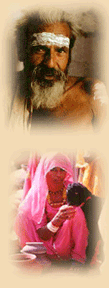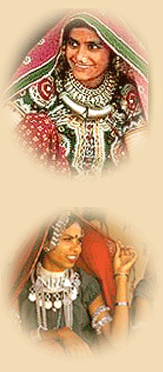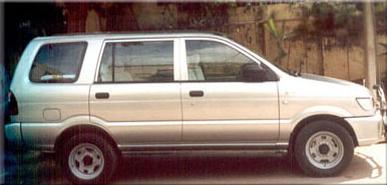|
The most important
contribution of Kumbha was in the field of architecture. He took
great interest in architecture and was an enthusiastic builder.
His architectural activities may best be studied with reference
to the forts, places, lakes etc., which adorned his age.
Kumbha constructed the fort of Achalgarh on a peak of Mount Abu
in 1452 A.D. it consists of portals, towers, guardrooms, and
ruins of granary, altars and palaces. The main object of its
construction was that it may serve as a military watch and alarm
post against the penetration of the army from Gujarat, Sirohi,
Nagaur, and Jalor. An equestrian brass statue of Maharana Kumbha
with those of two other Maharanas and a bigger one of the family
priest are objects of divine honour housed in a humble strawshed
on the descent of the fort.
“The highest monument of Kumbha’s military and constructive
genius, however, is the wonderful fortress of Kumbhalgarh or
Kumha and Kumbhalmer, second to none in strategically importance
or historical renown. It was to this impregnable fortress that
the Maharanas of Mewar always turned their eyes, when Udaipur
became unsafe and Chittor untenable. Kumbhalgarh, situated on
25.9’ North and 73-35’ East, about 60 miles north of Udaipur,
stands on a high peak of the most westerly range of the Aravali
Hills on the site of an ancient stronghold, which, according to
traditions was built by the famous Jain king Samprati, who
flourished in the third century in the Christian era. Kumbha
began the construction of the fort in 1433, and it was completed
in 1448 A.D. it was designed and built by Kumbha’s architect
Mandana.”
“Kumbhalgarh is defended by a series of walls and battlements
and bastions bolt on the slopes of a hill, and contain a domed
placed and buildings which are reached through several gateways
along a winding approach. The palace in it is built by Kumbha
and stands 3,568 feet above sea-level, and commands a fine
panoramic view of the wild and rugged scenery of the Aravalis
and sandy plains of Marwar. Below his peak, on every side and
enclosed with in a high battlemented wall, so thick as to allow
8 horsemen to ride abreast the uneven ground is studded with
numerous old temples and reservoirs, barracks for the garrison,
grain stores and other domed buildings. The formidable bastions
in the battlemented wall of Kumbhalgarh are peculiar in shape
and so built that the enemy may not be able to scale them by
means of ladders.”
The fort has seven gates leading to it. The inner fort is called
Katar-garh which is on higher elevation and crowned with palaces
called Jhalia-ka-Mahal, Badal Mahal and Tara Burj. Other notable
monuments within the forts are Topkhana, Nava Choki, Vedi,
Nilkantha temple and Mamadeo temple. The fort provides space for
habitations and agriculture. These are facilities for irrigation
through inter-connected reservoirs.
Another important fort, constructed on old ruins by the Rana,
was that of Chittor. He had the credit to strengthen the
defenses of the fort by constructing seven gates, circular
bastions and towers. He also provided a broad road up the hill
so that chariots and horses could reach the fort easily. He also
built several step wells, reservoirs and temples in the fort.
There the Tower of Victory is the most important monument genius
ever erected by the Rana. It was constructed to commemorate the
victory of the Rana over Mahmud Khilji I of Malwa. The
construction of this tower was entrusted to Jaita, a celebrated
architect off the Chittor zone. It is one hundred and twenty
feet in height. There are nine distinct storeys with planning on
all sides, columns, pilasters, numberless horizontal bands and
cornices. A stair passes up the tower from the first story to
the eighth connecting central and gallery part of the storeys.
The entire exterior and interior body of the tower is ornamented
with sculptures pertaining to mythological depiction and
exposition of everyday life. The tower of victory has proved a
large treasure house of continuous series of relief sculptures,
which has ever come to light. Five images of gods and goddesses,
and relief sculptures illustrate the ornaments, dresses and
manners and mode of living belonging to the 15th century. The
rich and varied contents of the sculptures of the tower hold
before us a mirror, as it were, reflecting heavenly and earthly
life of the age. Mr. Fergusson has rightly better taste as an
architectural object than the Roman example.” Col. Tod also
expresses his impression about the tower by saying “who could
look, on the lovely, this majestic column, which tells in
language more easy of interpretation than the tablets within…”
Other forts, minor and major, constructed by Kumbha were about
80 in number which fortified the passes between the frontiers of
Mewar, Marwar, Sirohi and Malwa. The fort of Kolana, Vairat and
Ahore were either built or repaired by him to defend the
northern and western frontiers of Mewar, Marwar, Sirohi and
Malwa. The fort of Kolana, Vairat and Ahore were either built or
repaired by him to defend the northern and western frontiers of
Mewar. To safeguard the south-western boundaries of Mewar and
overawe the Bhumiyas and Bhils of Jhdole, Panarva etc., several
other forts were constructed.
Maharana Kumbha also built quite a large number of temples in
Mewar. The Kumbhaswami temples of Chittor and Kumbhalgarh were
of highly elaborate pattern and decorated with sculptures. The
temple of Kumbhaswami of Chittor dedicated to Lord Krishna is
said to have been constructed, with the material brought from
the ruins of the ancient shrine at Nagari, situated 7 miles from
Chittor. “This temple has carvings in parts of its exterior
walls and roofs which are generally found in Buddhist
buildings.” Abul Fazi has named it the temple of Govind Shyama.
It was built in the year 1448 A.D. by the Rana.
Of all the temples erected by Kumbha, the Ranakpur Temple is the
most important and majestic. It was erected in the Sadri Pass
and is dedicated to Rishabhadeva. The temple covers 48,000
square feet area and consists of Shikhars, domes and Sabhamandap
off extra-ordinary size. There are about 20 domes supported by
about 420 columns. Mr. Fergusson praises this temple in the
words : “It is the most complicated and extensive Jaina temple,
I have myself ever had an opportunity of inspecting. Indeed, I
know of no other building in India of the same class that leaves
so pleasing an impression or afford so many hints for the
graceful arrangements of columns in an interior”. The temple was
designed by one Dipaka or Dipa, a Sompura Brahmin of Mundata. It
was originally designed to have seven storeys but only four
could be completed.
There is another important temple of Ekligna which was renovated
by Maharana Kumbha. It consists of mandapa, sanctum, toran,
double storeyed porch, double storeyed sanctuary and pyramidal
sikhara. It contents four-faced divinity and a brazen bull Nandi
of the natural size, caste in excellent proportions. The
approach to the temple is through a gate connected with narrow
passages and courtyards of different sizes and levels.
Another important temple, named Singar Chauri was, built by
Bhandari Velaka, the treasurer of Kumbha, in 1448 A.D. “The
exterior walls of the temples are beautifully sculptured in
horizontal bands containing numerous figures and floral scrabs
and are worth study by anyone who is a carver. The central part
of the building is covered by a circular Jain dome built in
horizontal layers richly ornamented. Its architecture is
admirable and building, although small, is one of the most
attractive in Chittor.”
Maharana Kumbha also constructed residential palaces, one at
Kumbhalgarh and another at Chittor. He also built several
reservoirs at Chittor, Abu and Kumbhalgarh, He laid out a garden
at Kumbhalgarh. Kumbha’s palaces consist of plain chambers, one
over the other, adjoined by two side rooms. The male and female
apartments were separated by narrow walled gallery running from
one end to the other. They were so designed that in a way they
may be termed self sufficient with rooms, rectangular halls,
stables, temples, store-houses, towers and residential quarters
of the which towers and residential quarters of the princes.
Thus the epoch of Kumbha is memorable in the political and
cultural history of Rajasthan. Many of the poets and writers
flourished during his time. Under him Mewar became a great
center of learning. Kumbha for all such achievements bore the
title of paramaguru, the highest preceptor of kings. We may
conclude by saying, “Maharana Kumbha was a great sovereign, a
great military commander a great builder and a great scholar”. |









